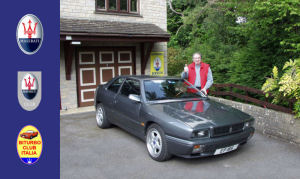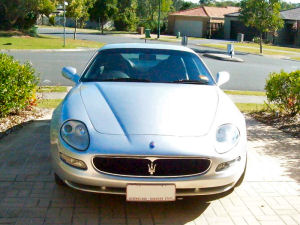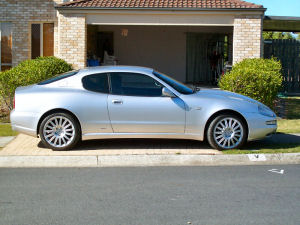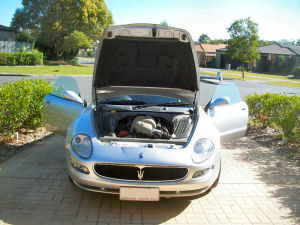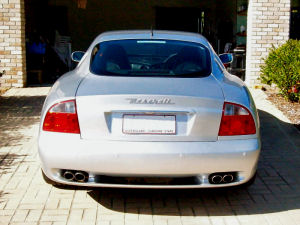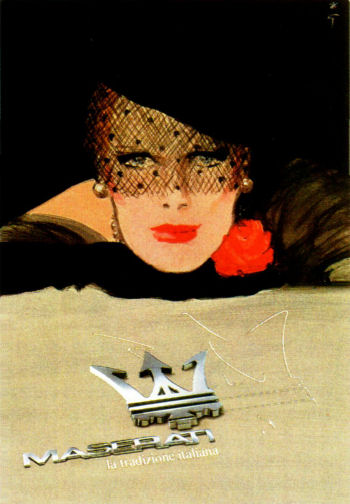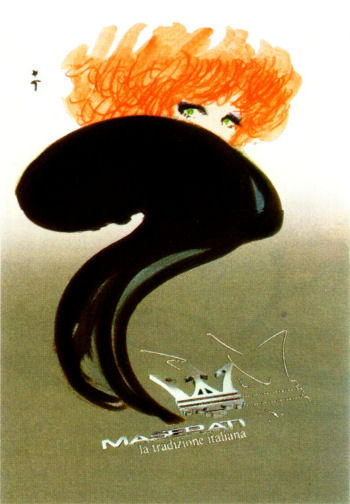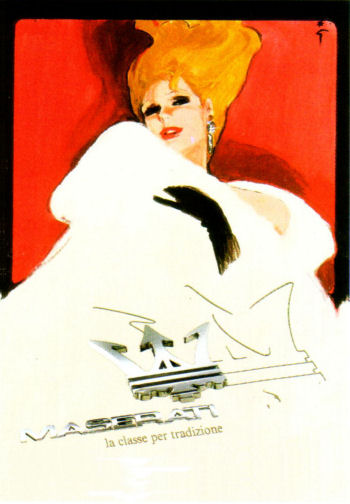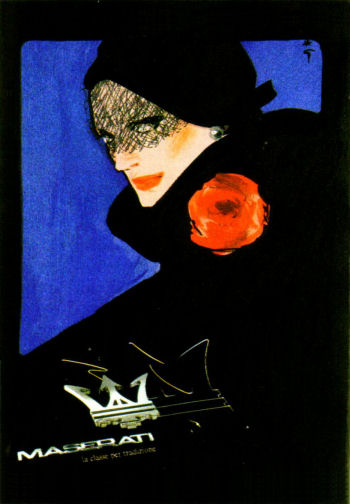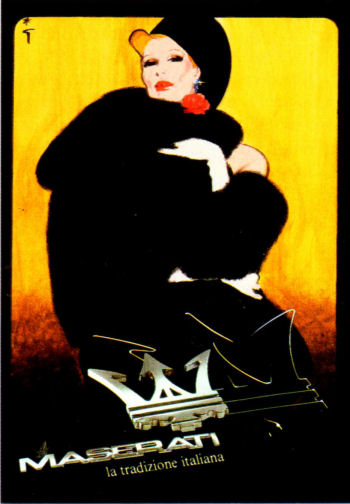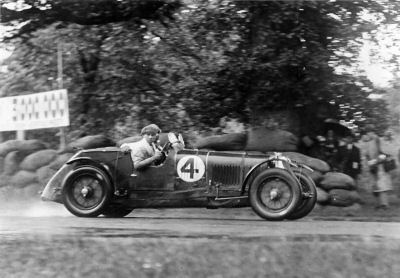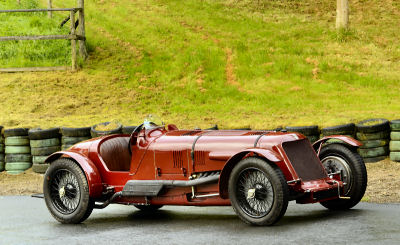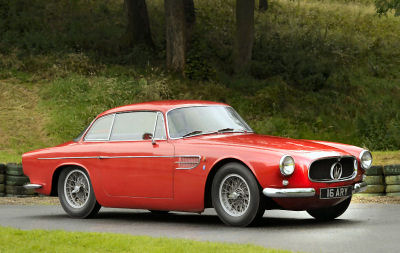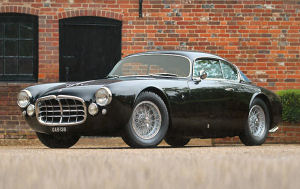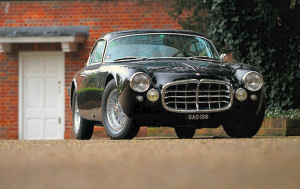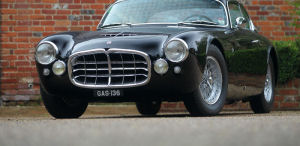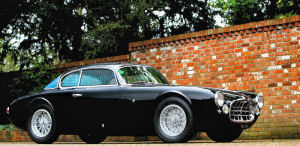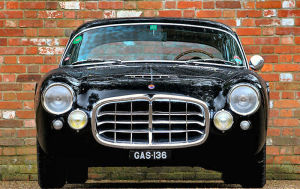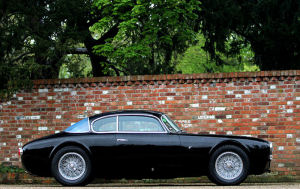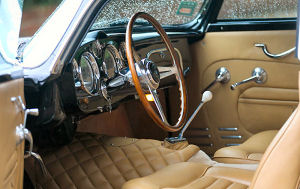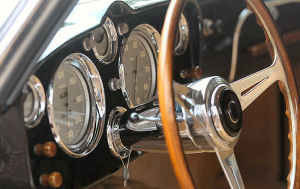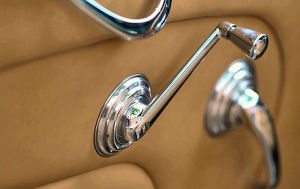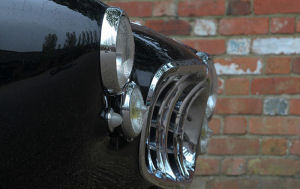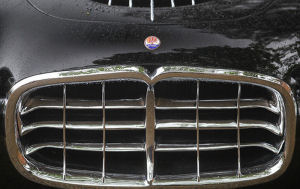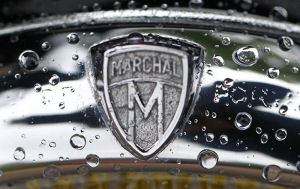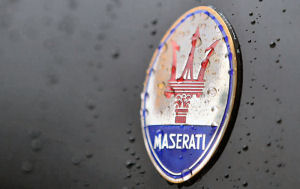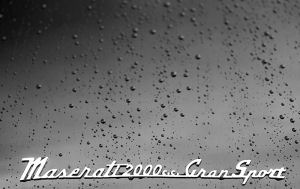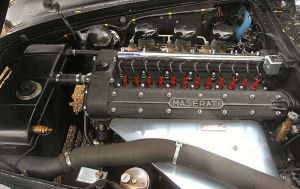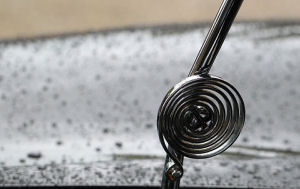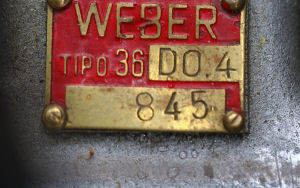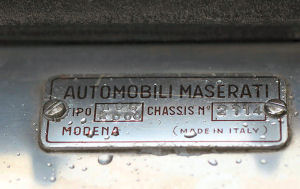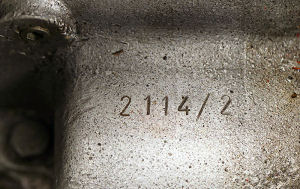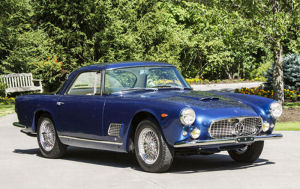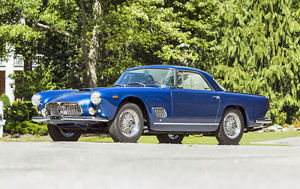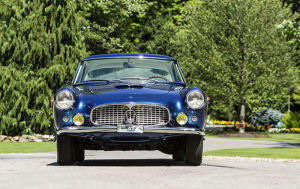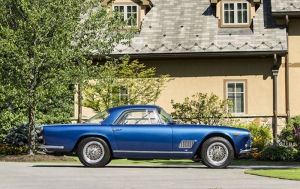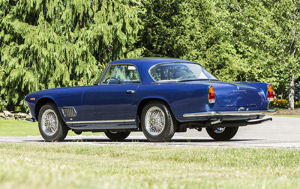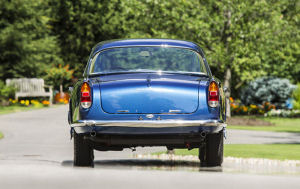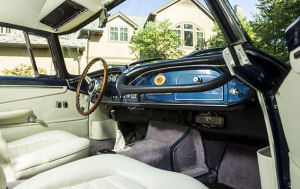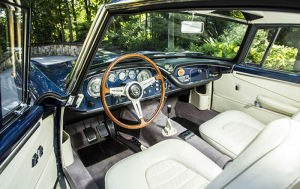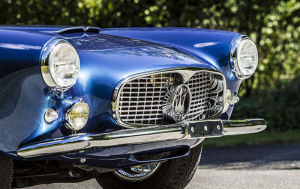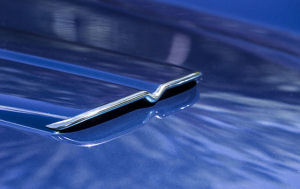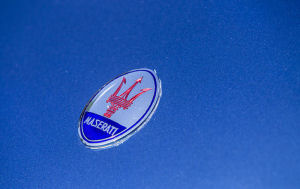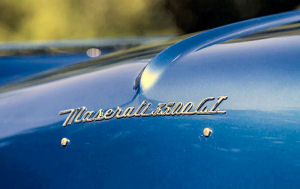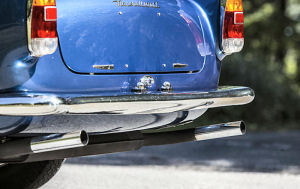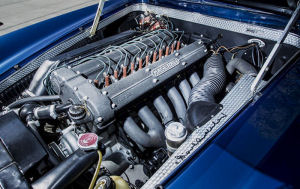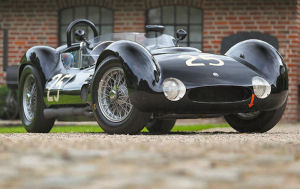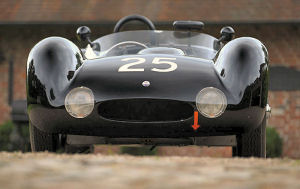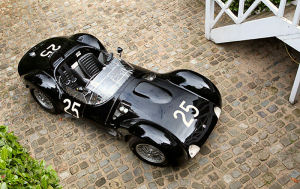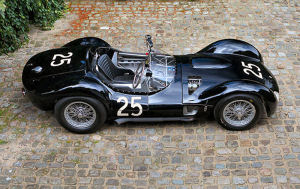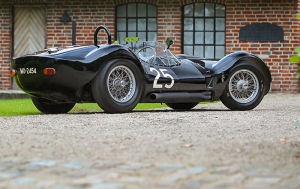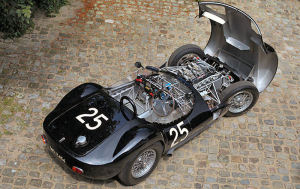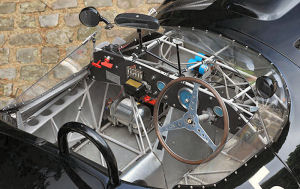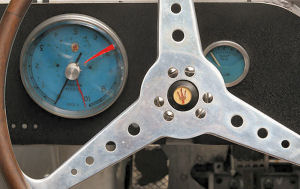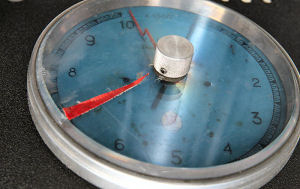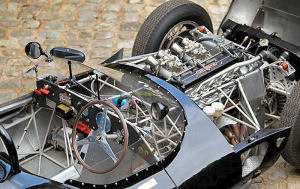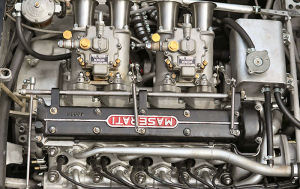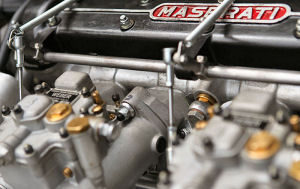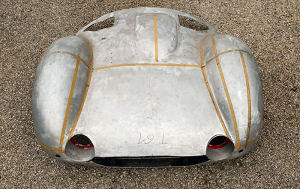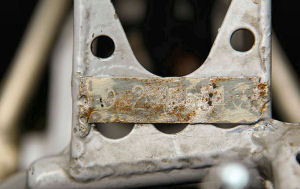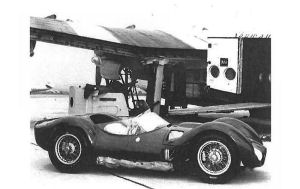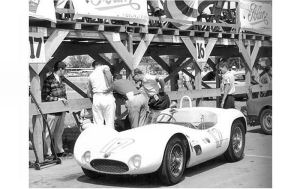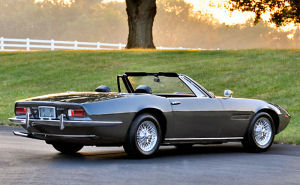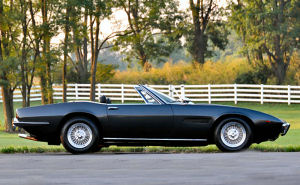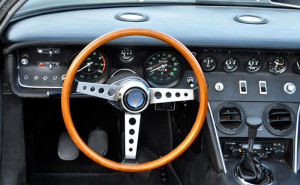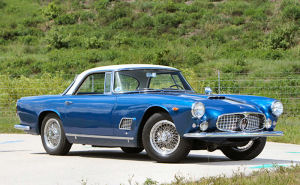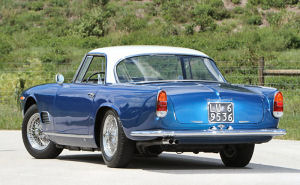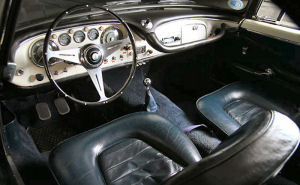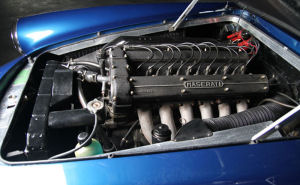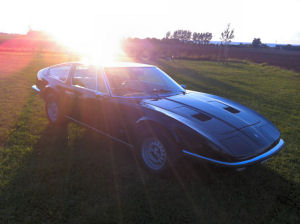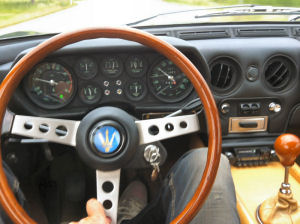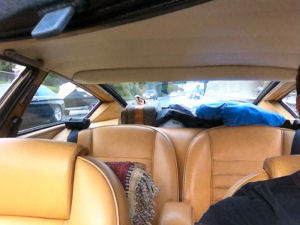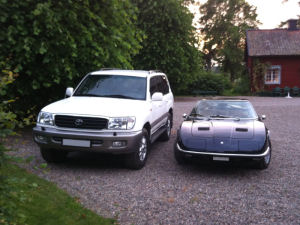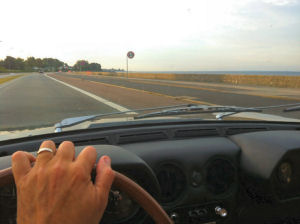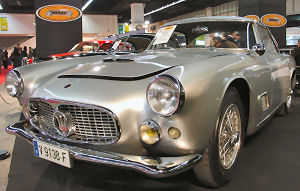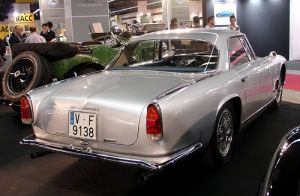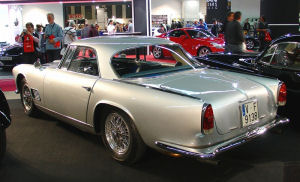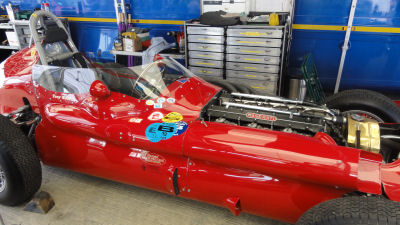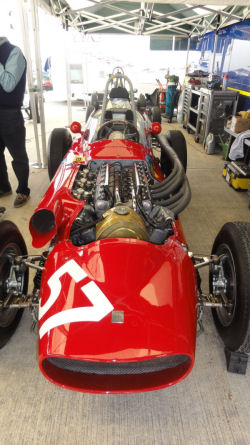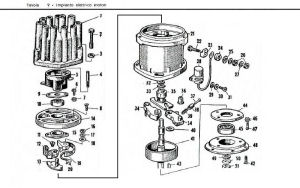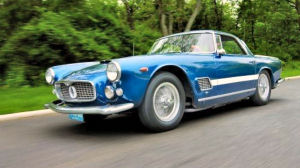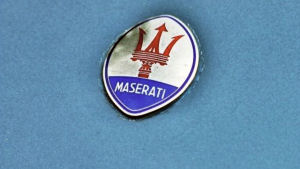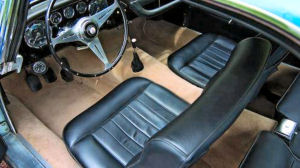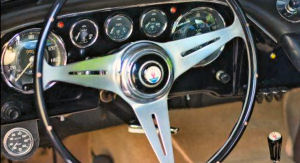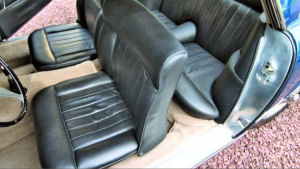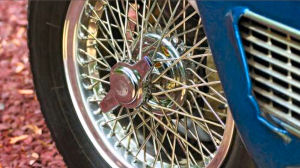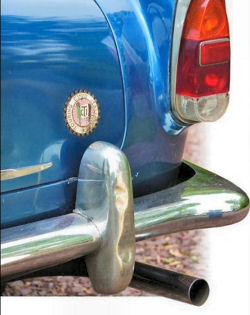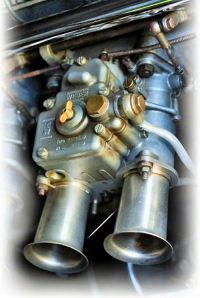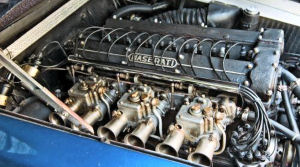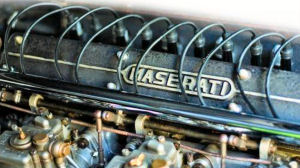The Maserati 3500 GT touring was introduced in 1957 and production continued until 1964, with approximately 2,000 manufactured during that period. Maserati 3500 GT AM 101.1954 spent the first five years of its life in Europe, as confirmed from research by marque historian Adolfo Orsi. In November 1961, Bologna Maserati dealer Cesare Perdisa, himself a former race pilot, placed an order for this car, finished in grey with a blue interior. Completed and delivered in February of the following year, Mr. Perdisa retained the car for two years, using it for dealership and promotional purposes, before it was acquired in 1964 by Bruno Deserti and registered with the Bologna Automobile Club. An up and coming Italian driver on the European circuits, Mr. Deserti later turned the Maserati over to a fellow competitor, Peter Revson, the dashing young Revlon cosmetics heir who was just beginning his racing career and driving in Formula Junior throughout Europe. At that time, Mr. Revson and other future auto racing stars were based in England, as were the major racing teams, their shops, and suppliers. As his career progressed, he would enjoy much success at the Indianapolis 500 and in Formula One, as well as Can-Am racing and a podium finish at the 12 Hours of Sebring with Steve McQueen.
According to supplied documents, Revson brought AM 101.1954 back to Modena in the summer of 1964 for a service. In fact, Mr. Orsi, grandson of Omar Orsi, of Maserati SpA, recalls being in his grandfather’s office when Revson arrived. By year’s end, Revson relinquished his stewardship to another competitor, Chris Amon, of New Zealand, the tremendously talented Formula One driver, whose long list of accomplishments included wins at the 24 Hours of Daytona and Le Mans. Mr. Amon later passed the Maserati to Walter Willmott, a fellow New Zealander and an employee of Team McLaren.
By 1967, AM 101.1954 had arrived stateside and resided in Wisconsin until about 2004, with such owners as Milwaukee sports car enthusiast Clarence Graham, Jackson Reiff (who enjoyed it in local rallies and driving events), noted collector David Uihlein, and Don Faul, who began a twelve-year process of redoing and repairing, as needed, every detail of the Maserati to the excellent driver quality condition it is in today.
The current owner acquired the car about eight years ago. Finished in West Indies Blue (Maserati color code 20527 Blu Antile Savid), the car’s interior sports the original and very comfortable touring seats with supple blue leather (Scuro Blu hides) over tufted wool carpeting. A new, factory correct headliner was installed by the current owner.
A crowd favorite at local shows, including the People’s Choice Awards on several occasions, the car was recognized as the Best Maserati at the Palm Beach Cavallino Classic Sports Sunday, among other honors. Please note that all tools, records, receipts, and the archived history provided by Dr. Orsi, of Historica Selecta, will accompany the sale of this handsome Maserati, with its exceptional list of documented former owners including Peter Revson and Chris Amon.
ADDENDUM
Please note the catalog incorrectly references Mr. Orsi’s presence in his grandfather’s office upon Peter Revson’s arrival. The provenance of this car, as it relates to the famous racing driver and the car’s subsequent owners is otherwise entirely accurate.
Text and photos courtesy of RM Auctions. |
